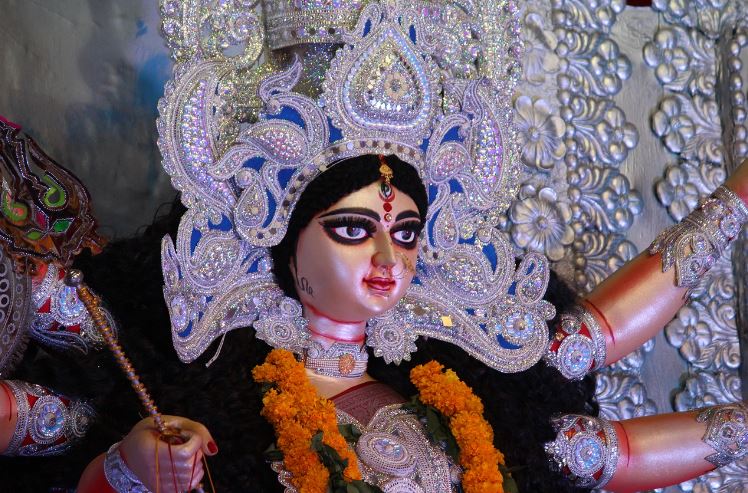
Navratri 2024 Colours and Dates, Durga Puja 2024 Dates, Dussehra 2024 Date
Posted on September 19, 2024
Navratri is a major Hindu festival that spans nine nights and is celebrated with great devotion across India. It honours the goddess Durga and her various forms, symbolizing the victory of good over evil. The word “Navratri” translates to “nine nights” in Sanskrit, with each night dedicated to different aspects of the goddess.
The colours of Navratri hold deep spiritual and cultural significance, playing a key role in enhancing the festive mood and devotion during the nine-day celebration. Each of the nine days is dedicated to a different form of Goddess Durga, and the associated colour reflects the qualities and symbolism of that form.
Navratri 2024 Dates and Colours:
| Date | Colour | Tithi |
| Thursday, October 03 | Yellow | Pratipada |
| Friday, October 04 | Green | Dwitiya |
| Saturday, October 05 | Grey | Tritiya |
| Sunday, October 06 | Orange | Chaturthi |
| Monday, October 07 | White | Panchami |
| Tuesday, October 08 | Red | Shashti |
| Wednesday, October 09 | Royal Blue | Saptami |
| Thursday, October 10 | Pink | Ashtami |
| Friday, October 11 | Purple | Navami |
| Saturday, October 12 | Peacock Green | Dussehra |
Key Aspects of Navratri:
- Worship of Goddess Durga: Over the nine days, devotees worship nine avatars of Goddess Durga, each representing different qualities like power, beauty, and wisdom. These forms are known as Navadurga.
- Celebration and Rituals: Navratri is marked by daily prayers, fasting, and special rituals. People visit temples, organize pujas (worship ceremonies), and offer food and flowers to the goddess. The festival is also an occasion for cultural performances like Garba and Dandiya Raas, traditional dances popular in Gujarat and Maharashtra.
- Regional Variations: While the basic theme of Navratri remains the same, it is celebrated differently across India:
- In West Bengal, it coincides with Durga Puja, a grand celebration where intricately designed idols of Goddess Durga are worshipped and later immersed in rivers or lakes.
- In Gujarat, vibrant Garba and Dandiya dances are performed in large gatherings.
- In South India, homes and temples display traditional Golu dolls, which are arranged in tiers and represent gods, goddesses, and scenes from Hindu mythology.
- Fasting and Feasting: Devotees often fast during Navratri, avoiding grains, meat, and alcohol. Instead, they consume fruits, milk, and special vrat (fasting) foods. The fasting is seen as a way to purify the body and mind during the festival. On the final day, Vijayadashami, or Dussehra, the fast is broken with a grand feast.
- Symbolism: Navratri represents the eternal battle between good and evil. According to Hindu mythology, Goddess Durga fought and defeated the buffalo demon Mahishasura over nine nights, symbolizing the triumph of righteousness.
Navratri is a time of spiritual reflection, vibrant celebrations, and a reminder of the strength and resilience embodied by Goddess Durga. The festival concludes with Dussehra, symbolizing the ultimate victory of light over darkness.
